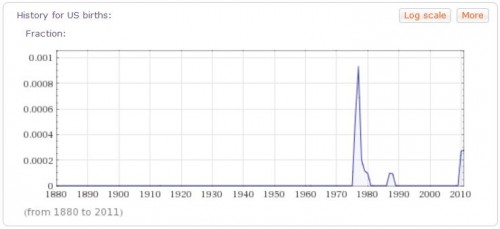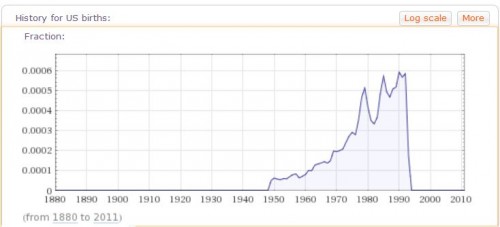Cross-posted at Montclair SocioBlog.
In the Pittsburgh of my youth many decades ago, Rolling Rock was an ordinary, low-priced local beer – like Duquesne (“Duke”) or Iron City. (“Gimme a bottle of Iron,” was what you’d say to the bartender. And if you were a true Pittsburgher, you pronounced it “Ahrn.”). The Rolling Rock brewery was in Latrobe, PA, a town about forty miles east whose other claim to fame was Arnold Palmer. The print ads showed the pure sparking mountain stream flowing over rocks.
That was then. In the late 1980s, Rolling Rock started expanding – geographically outward and socially upward. Typically, when ideas and fashions diffuse through the social class structure they flow downward. Less frequently, the educated classes embrace an artifact of working-class culture. But why? Their conspicuous consumption (or “signalling,” as we now say) is saying something, but what ideas about themselves and the social landscape are they expressing with their choice of beer?
I had an e-mail exchange about that question with Keith Humphreys, who blogs at The Reality-Based Community. He too grew up in western Pennsylvania, and we both recalled being surprised years later to see Rolling Rock as a beer of choice among young stock traders and other decidedly non-working-class people. But we had different ideas as to what these cosmopolitans thought they were doing. Keith saw it as their way of identifying with the working class.
Those of us who grew up near Latrobe, Pennsylvania are agog when upscale hipsters who could afford something better drink Rolling Rock beer as a sign of their solidarity with us.*
I was more skeptical. I saw it as the hipsters (or before them, the yuppies) trying to be even more hip – so discerning that they could discover an excellent product in places everyone else had overlooked. Rolling Rock was a diamond in the rough, a Jackson Pollock for $5 at a yard sale. The cognoscenti were not identifying with the working-class. They were magnifying the distance. They were saying in effect, “Those people don’t know what a prize they have. But I do.”
I had no real data to support that idea, so I asked Gerry Khermouch, who knows more about beverage marketing than do most people. His Beverage Business Insights puts out industry newsletters, and he writes for Adweek and Brandweek. He’s also beverage buddies with the guys who changed Rolling Rock marketing. Here’s what he said,
[F]ar from expressing solidarity with the working class, urban drinkers far afield regarded it as an upscale icon in much the way that Stella Artois has claimed today — a triumph of pure marketing.
One ad campaign in the 90s, “Subtle Differences,” aimed directly at the drinker’s connoisseur fantasies. Here are two examples:

It’s the little nuances that make life more interesting. Rolling Rock uses slightly more malt than other domestic golden lagers for a refreshing taste that’s got a little more body, a little more bite. If you’ve noticed, we salute you.
Words like nuance were hardly an appeal to solidarity with the working-class. Neither was the strategy of raising the price rather than lowering it.
To the marketers, the nuance, the malt, bite, and body didn’t count for much. Their big investment was in packaging. Instead of stubby bottles with paper labels, they returned to the long-necked, painted-label bottles with the mysterious “33” on the back. Apparently, the original packaging, the “Old Latrobe” reference, and the rest added notes of working-class authenticity.
As for the actual beer inside those bottles, it may have once been what the ad copy said. The brewers had tried to overcome the “watery” image from the beer’s early water-over-the-rocks imagery. But when Anheuser-Busch bought the company in 2006, they closed the Latrobe brewery, and Rolling Rock became a watery, biteless product indistinguishable from the other innocuous lagers that dominate the US market.
* This was an aside in a post about the future of the marijuana market. See also our post about the resurgence of Pabst Blue Ribbon.
Jay Livingston is the chair of the Sociology Department at Montclair State University. You can follow him at Montclair SocioBlog or on Twitter.















